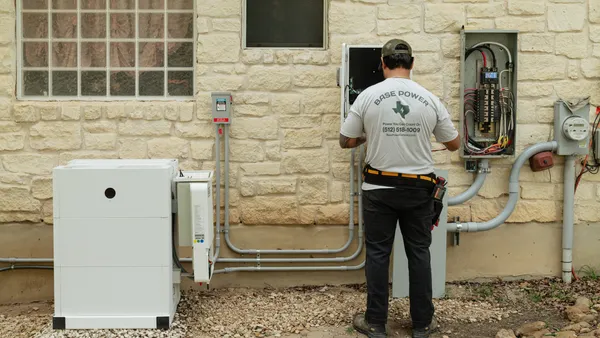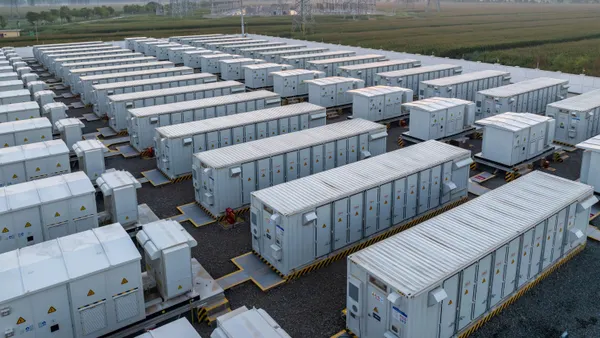Dive Brief:
-
United Power Cooperative and SoCore Energy plan to build what they say would be the largest energy storage facility to date in Colorado.
-
The 4 MW, 16 MWh battery storage system in Firestone, Colo., would store energy generated over night and discharge it during the day to reduce demand charges.
- The Firestone storage system is the first of several storage projects United Power is planning as part of its “community battery” strategy that lets members of the cooperative share the battery system’s output to reduce demand charges on their monthly electric bills.
Dive Insight:
SoCore Energy, a Chicago based subsidiary of California utility holding company Edison International, sees electric cooperatives as growing market for energy storage.
Co-ops typically have large territories and relatively few customers, so traditional transmission and distribution projects can be very costly with only a small number of customers to absorb those costs.
“Investments in DERs and, increasingly energy storage, help co-ops’ investment planning,” SoCore spokesman Kevin Phelan told Utility Dive. The cost per transmission mile tends to be higher for co-ops, he said. As the cost of storage declines, that creates opportunities.
SoCore began exploring the co-op storage market about a year ago through a relationship with NRTC, an organization that supports technology adoption and development for co-ops.
In February, SoCore and NRTC collaborated and won a solicitation to build solar facilities totaling 13 MW for Dairyland Power Cooperative. More recently, SoCore has seen a shift among coops when it comes to energy storage. About 12 or 18 months ago, co-ops didn’t want to talk about storage; now the vast majority bring it up themselves, Phelan said.
Another indication of the changing market can be seen in Minnesota where Connexus Energy, that state’s largest electric cooperative announced plans in July to build a 20 MW, 40 MWh storage system that would be the largest in the state. The storage system would be collocated with three solar power plants totaling 10 MW.
In the Colorado project, United Power has adapted the community solar concept to the demand side of the equation with what its community battery program.
Like a community solar program, customers subscribe to the program. But instead of getting a credit for power generated, they get a credit to offset their peak demand. The program is open to anyone, but it mostly aimed at commercial and industrial customers, Jerry Marizza, project manager at United Power, told Utility Dive.
“The magic here is that it would take a lot of money for a C&I customer to reduce their peak demand, but it is a lot easier for the utility to manage its load profile,” Marizza said. United Power does not have its own generation, instead buying power wholesale from Tri-State Generation and Transmission Association.
Marizza estimates a C&I customer could pay back their subscription investment in about 10 years.
The way Marizza sees it, United Power wins even if no customers sign up for the program. The batteries would cut United Power’s peak demand and repay the investment in seven or eight years with a 10% return.
The total investment was not disclosed, but Marizza says batteries cost about $2,000/kW and United Power has already committed “millions” to the project.
If the program works out, Marizza says he could envision another five projects. After that, he says he would have to go to longer duration batteries to get peak demand savings and those more expensive batteries would change the economics of the project.
“We’re seeing growing interest in energy storage among coops,” Madeleine Klein, managing director of policy and market strategy at SoCore, told Utility Dive. “Costs have declined to the point that coops are seeing real value in peak shaving, energy shifting, even infrastructure investment deferral. We expect this will only accelerate as time goes by.”












